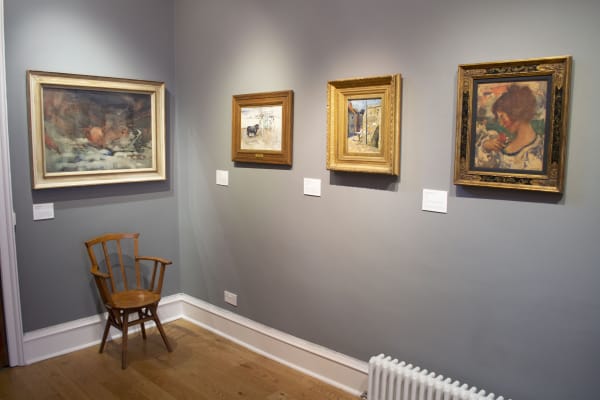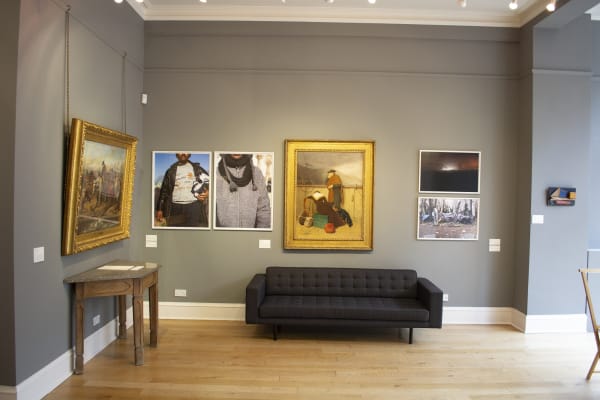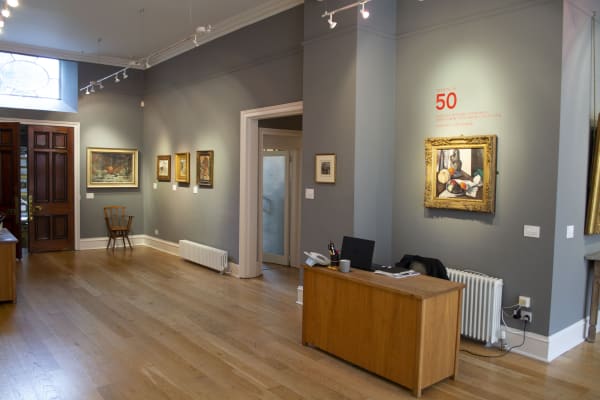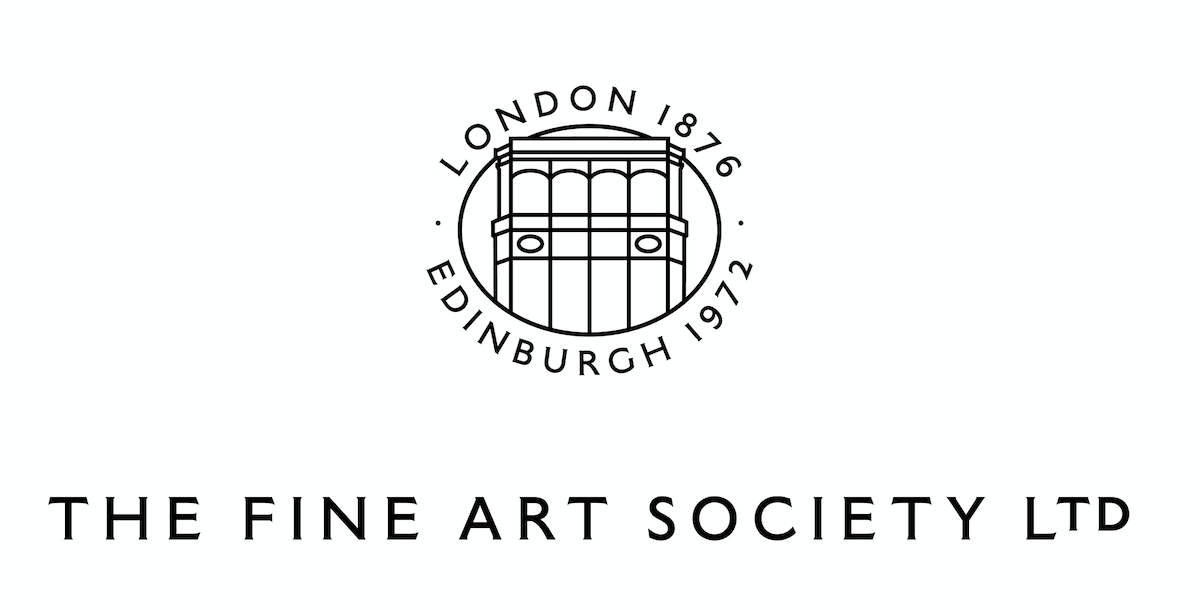Fleming At Fifty: Radicals, Pioneers and Rebels
In partnership with The Fleming-Wyfold Art Foundation, the exhibition showcased historic nineteenth and early twentieth Scottish paintings in modern and timely contexts, focusing on pioneering female artists, migration and refugee status, and the endless search for truth in art.
The exhibition centred around six historic paintings from the Fleming Collection with acute relevance for today. Thomas Faed’s The Last of the Clan and John Watson Nicol’s Lochaber No More are the two iconic paintings of the Highland Clearances, revealing the radical edge of the High Victorian genre painters in their depiction of the suffering caused by eviction, homelessness and forced emigration in nineteenth century Britain.
Mabel Pryde’s The Artist’s daughter Nancy, as Pierrot, and Flora Macdonald Reid’s Fieldworkers, reveal how two late nineteenth century women were at the forefront of the cutting edge artistic movements of their day, and yet are little known compared to their male peers.
William McTaggart’s, The Village, Whitehouse, painted in 1875, marks the turning point in the career of one of Scotland’s greatest innovators – prefiguring the radical technique of his late paintings, as expressed in Macrihanish, Bay Voyach, painted in 1894. McTaggert typifies the endless search for truth in art.

















